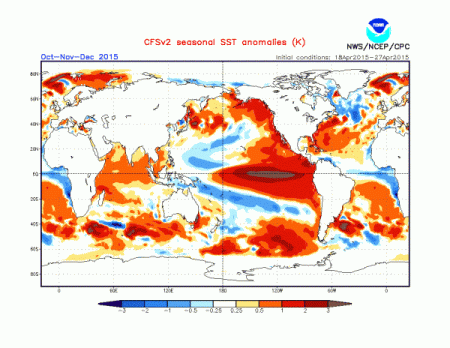Is There Any Chance Our Changing Climate Is A Natural Cycle?

The short answer is NO. Mathematically speaking there is absolutely no chance that our current warming is in any sense a part of a natural cycle. There are still many clinging to the notion that the human race has had little or nothing to do with the rapidly warming climate, but all available data and mathematical statistics say otherwise. Human activity has completely altered the biosphere in countless ways, especially in regard to the climate system. Of all the anthropogenic factors affecting the climate, the ongoing climate engineering programs are the single most significant source of disruption and decimation. To say the changes to our biosphere are "natural" would be like pushing someone off a cliff and then saying "people die, it's natural". So what are the odds of the changes in our climate being just a "natural cycle"? The Associated Press hired statisticians to find out, the results shown in the article below should paint a very clear and sobering picture. The fact that climate engineering is not mentioned or considered in the article is irrelevant. Climate engineering is still a form of human activity so the equation remains completely accurate. Dane Wigington geoengineeringwatch.org
Climate Change Ratcheting Up: El Nino Strengthens in Equatorial Pacific Increasing Likelihood for Record Warm 2015

Source: Robert Scribbler A powerful Kelvin Wave continued to ripple through the near-surface waters of the Equatorial Pacific this week — heightening sea surface temperatures, strengthening an ongoing El Nino, and pushing a wave of oceanic heat back into a human-warmed atmosphere that is hotter now than at any time in modern human reckoning. High temperature anomalies in the Kelvin Wave plug have spread out across the ocean surface. Readings in the range of +1 to +2 C above average stretch along surface waters all the way from the Date Line through 120 West Longitude. East of the 120 line, surface waters have now hit readings of 2 to 4 degrees Celsius above average. And lurking just below the surface along thousands of miles of ocean is a dense zone of 5-6 degree above average water. A zone of extreme heat at the heart of the current intense Kelvin Wave: (A strong Kelvin Wave shuts down atmospheric heat transfer into the Equatorial Pacific setting up conditions for an extended El Nino and possible new record heat for 2015. Image Source: NOAA’s Climate Prediction Center.) Heat that could well make 2015 yet another worsening of the human warming and extreme weather twilight zone we now find ourselves in.
